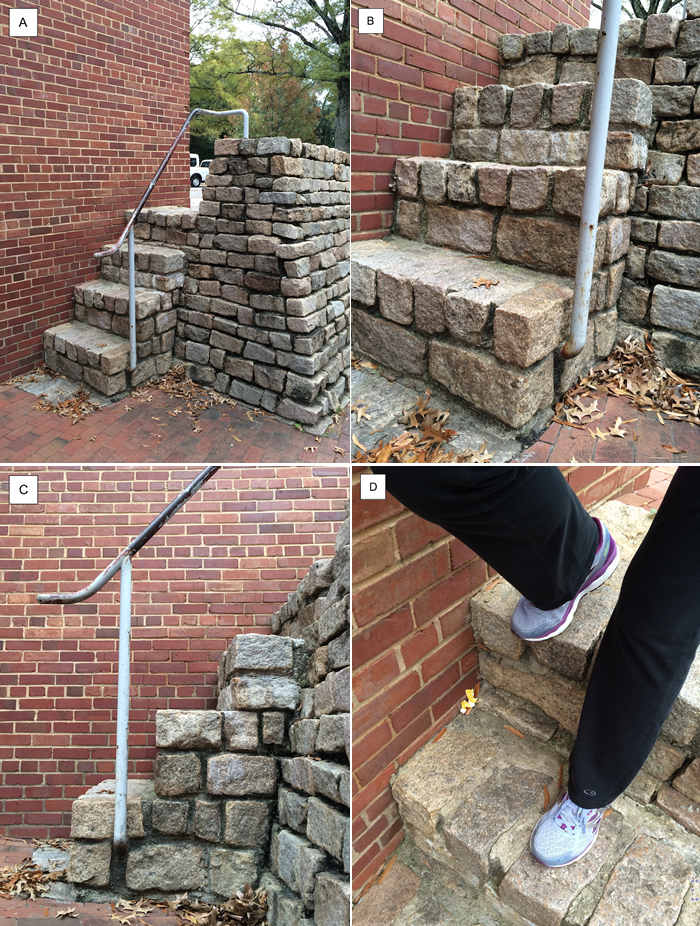Stairs of death SUPPLEMENT
- Details
- Last Updated: Friday, 09 December 2016 19:44
- Written by Dr. Donald H. Mershon
Summary: The first article in this pair was titled They’ve been called the “stairs of death.” That article described examples of how stair designers sometimes ignore basic aspects of perception and/or human factors in their decisions about constructing stairways. This supplement contains pictures of additional stairways that represent further examples of the variety of “problem” stairs. Readers are invited to contribute their own examples for inclusion in future updated editions of this supplement. (See end of the original article for directions.).

Stone stairs at the rear of the David Clark Lab,
NC State University.
- Overall view of stairway.
- Close-up view. Note irregularities in some stone alignments.
- Side view. Note the height of the stairs (risers) vs depth of the treads.
- View of a user attempting a safe descent. Note how the left leg must be fully extended, while the right knee remains awkwardly bent.
Photos by Jenn Hensley (2015)

The "fish steps" of Naksan Park,
Seoul, South Korea.
Stairs can be difficult to navigate for many reasons. The stairs seen here are quite creative – as art. Unfortunately, the combination of a high, curving hard-concrete stairway and the increased probability of a misstep due to the artwork risks a serious fall. (The argument that this entire picture has been artificially manipulated, rather than being painted directly on actual stairs, loses some credibility, if one notices the lateral offsets that occur at several locations along the sides of both fish and fish shadows.)



